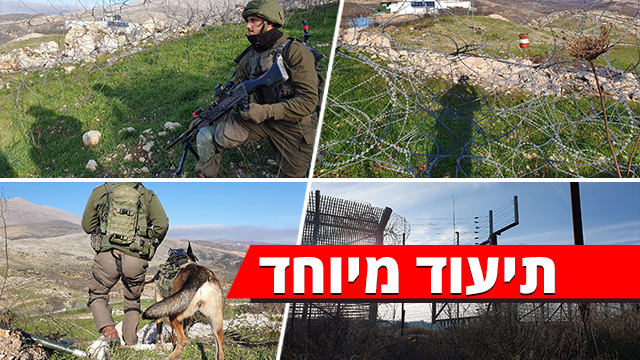
(Reporter: Yoav Zeitun Edited by Uri Autumn Photo: IDF Spokesman )
A thin white ribbon made of nylon fluttering in the wind, wrapped in rusty basents, almost torn. This is the only sign of the path where it is allowed to descend to the Syrian side of the Tel Sakhita outpost. Any deviation from the white and pastoral marking strip of the northern Golan Heights will be destroyed in an instant. “Here, it’s an old mine against a man floating to the ground, probably from the last rains,” Shlomi, the engineering officer, pointed to a disc-shaped gray object hiding in the nearby vegetation.
10 View the gallery
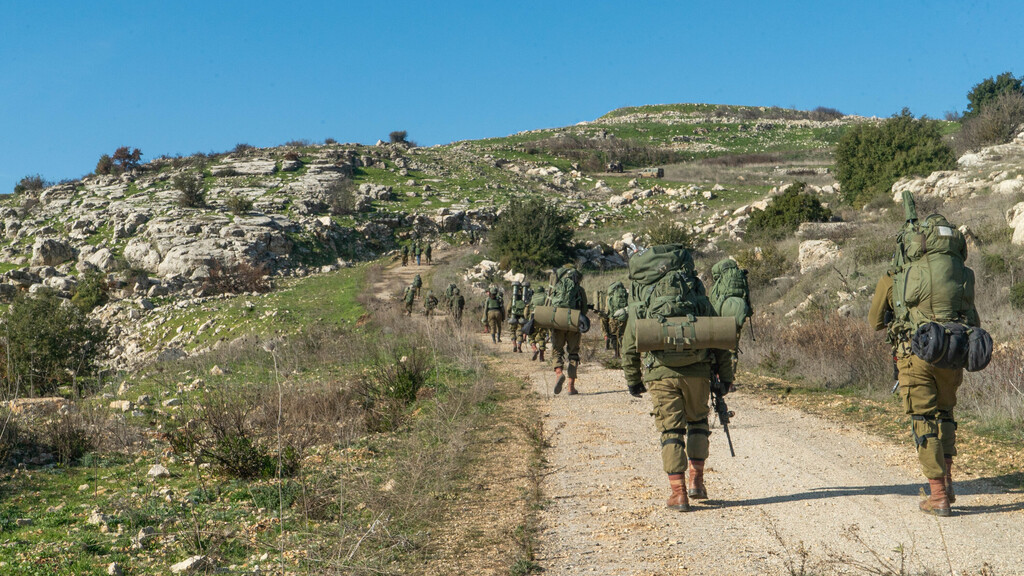

The paratroopers in the enclave across the Syrian border
(Photo: IDF Spokesman)
10 View the gallery
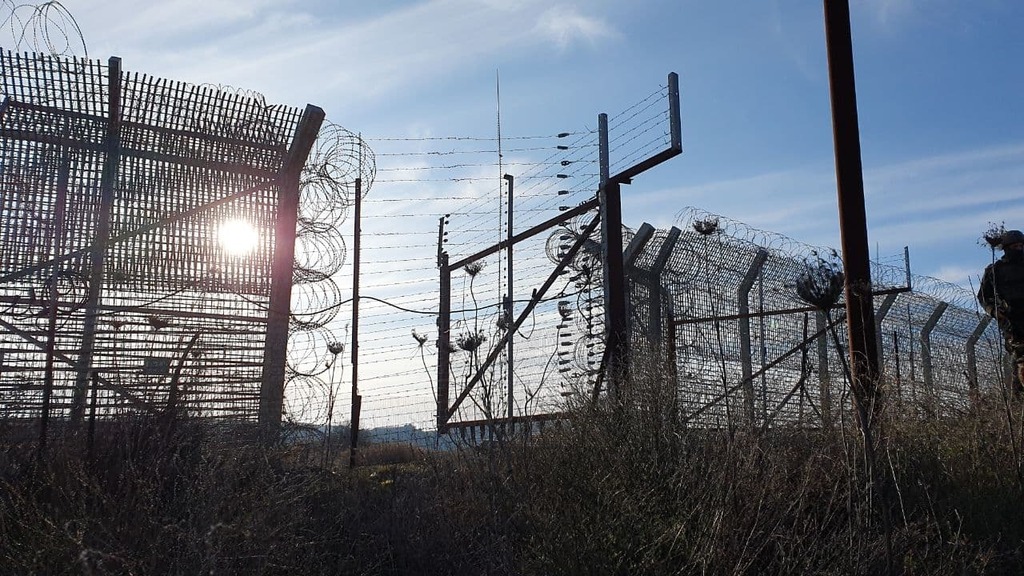

The Gate of Exit from Israel
(Photo: Yoav Zeitun)
A few steps from the marked path this is already Syria. The fighters are now in an Israeli enclave, but when they look west, they no longer see the apple orchards of the Druze-Israeli villages in the north of the plateau. The distant antennas of IDF outposts also disappeared.
The view from the old post is surprising – and daunting. The endless plains of southwestern Syria with a spot at the far end of the Damascus horizon. No obstacle, no fence, separates the fighters from Syria. Just a few rust-red-white-rust barrels that symbolize the international border from the 1974 ceasefire line. There is no trace of Israeli land, no reminder of the house.
10 View the gallery
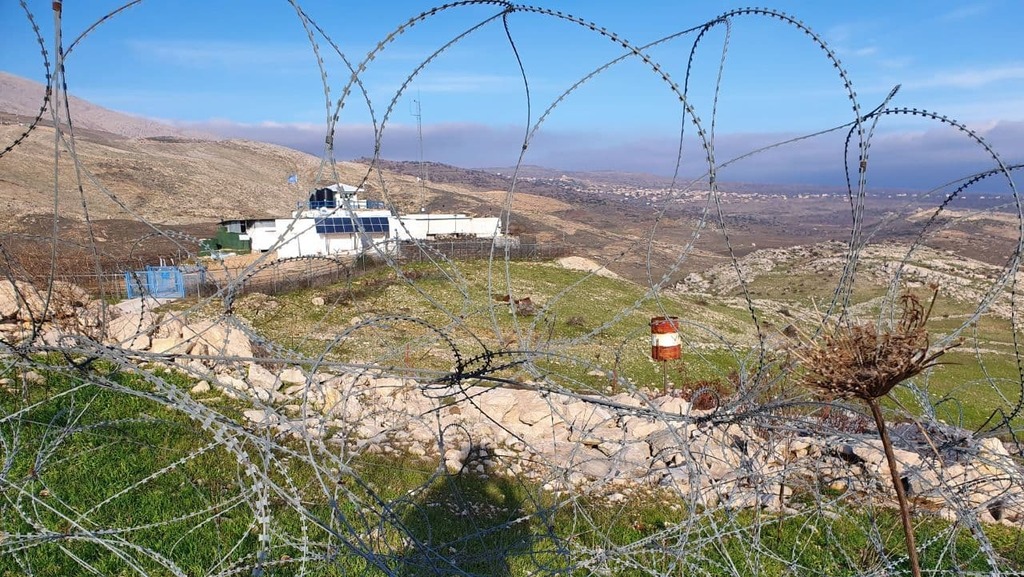

The rusty barrel that marks the border
(Photo: Yoav Zeitun)
10 View the gallery


In recent months, the Northern Command and the Air Force have, according to foreign publications, intensified the attacks in the Syrian Golan to a frequency of almost once a week. It begins to be reminiscent of the lawn mowing policy of arresting Palestinian suspects every night in Judea and Samaria, so as not to allow the terrorist infrastructure to raise its head. Thus it became the “sawing of the race” whose chips could be hijacked by Captain Daniel Mazgini, the company commander from the 202nd Battalion of the Paratroopers, who is in charge of the most dangerous sector below the border triangle with Syria and Lebanon.
The topography here is very tough. Low hills, folds of ground, avenues of fruit trees. The observations do not see everything so Daniel is aided by squads lurking and opening up the area. Together with his warriors he prepared to cross the perimeter fence, but not the border, on his way to a long and frozen day on the Syrian side of the barrier. A bullet in the barrel, a quiet but visible movement, and with personal equipment weighing more than 50% of their body weight, the fighters begin climbing to the abandoned outpost, where explosive devices had previously been planted.
Tel Sakhita is named after a Syrian village that was abandoned after the Six Day War and the occupation of the area by the IDF. Few remains of low-rise Syrian houses are difficult to find here, but the post that used to be the IDF forces in the distant past. At the top of the hill. The stone slits of the post can be controlled by observation and fire over the entire valley between the Israeli Majdal Shams and the Syrian Khader.
“All this equipment that the fighters are carrying on their backs is not a pose,” the lieutenant colonel clarified as he ascended the steep post. We are also ready for a long stay here. ”
10 View the gallery
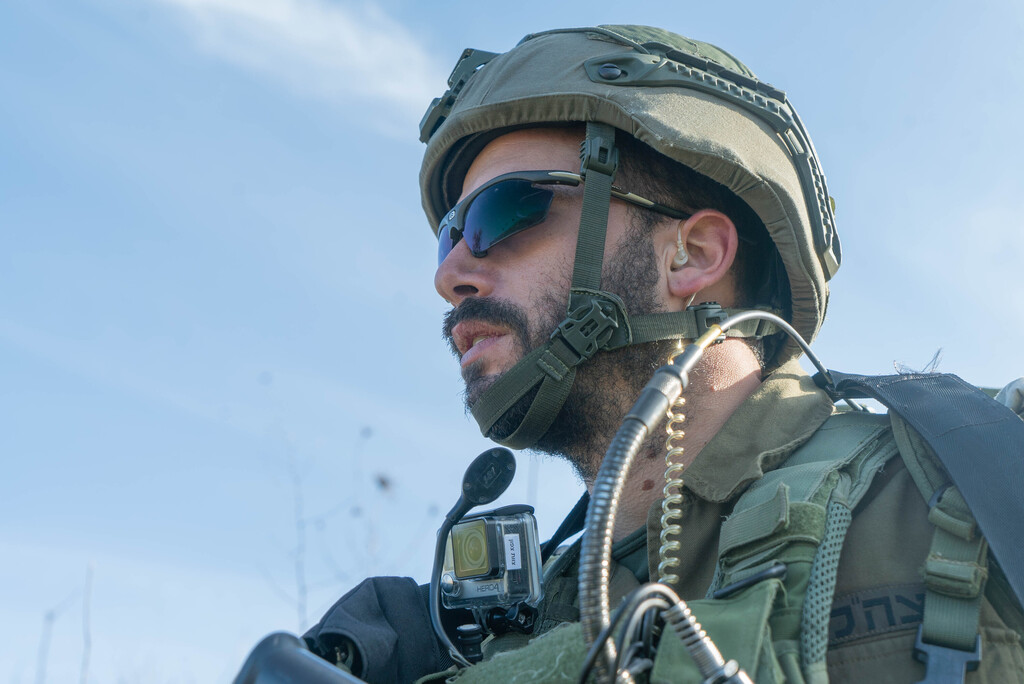

Captain Air conditioner. “We are not alone here”
(Photo: IDF Spokesman)
10 View the gallery


On the way to the abandoned outpost
(Photo: IDF Spokesman)
Arriving at the post is in combined traffic – two armored vehicles travel alongside the fighters who march heel to thumb side, sometimes alternating position. “The extreme scenario we practiced is a combined attack with an explosive device, counter-fire and snipers,” said Lt. Col. Daniel just before the forces arrived at the post. “We are not alone here.”
They will spend the next night among the old tunnels and canals that their parents or grandparents fought in 50 years ago. For a few moments there is an atmosphere of nostalgia, but in reality a sting warrior and his dog, next to the space brigade’s scouts, scan every corner of the space and look for “a different color of weeds or stones, an object that should not be here,” explained Major With organizational memory. “Come here, take a picture in your head and remember next time if anything has changed.” The post has many internal spaces, which can serve as a very convenient point for hiding an explosive device placed by Hezbollah operatives.
10 View the gallery


Sting warrior. Enter first along with the trackers to win the outpost
(Photo: IDF Spokesman)
An old asphalt axis surrounds Tel Sakhita, “Alon Axis” as it is called in the IDF. Tall and thorny weeds rise from the cracks in the road, evidence of the no-man’s land where it is located.
Although the village of Khader is three or four kilometers away by air, the IDF knows that the Shiite terrorist organization is trying to drive a stake here, under the auspices of the Syrian army and alongside pro-Iranian militias.
The fighters march openly, patrolling the outpost on foot, to exercise Israeli sovereignty on the spot, and also to gather intelligence. “You can see that we are controlled from above. This is the number one danger, and we can also easily hide a charge here and activate it on us,” Daniel said. “That’s why we are at peak alert. Why are we with a bullet in the barrel? Because there is no fence, the fence is an illusion.”
10 View the gallery
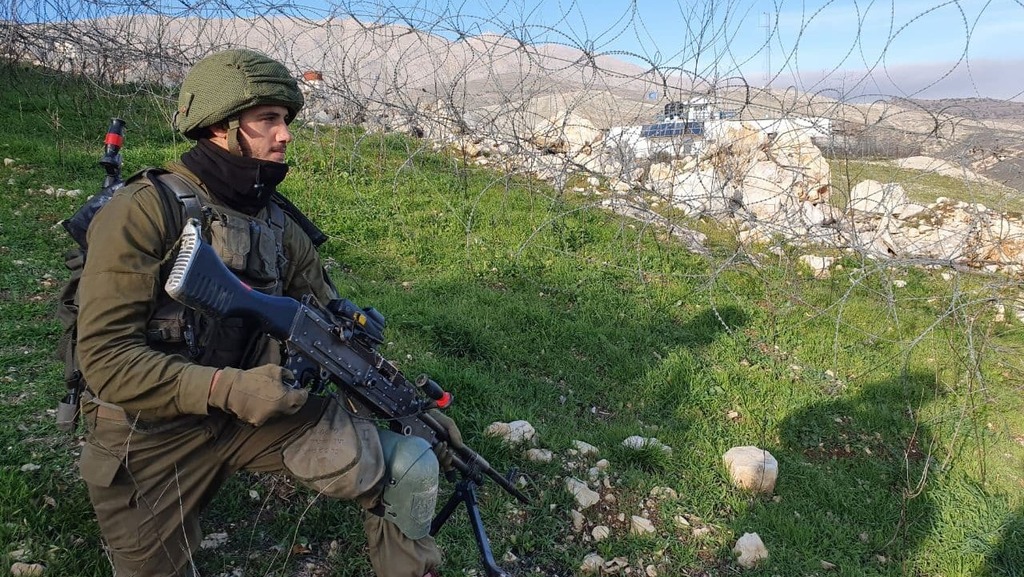

UN base in the background of the mounds. “The fence is an illusion”
(Photo: Yoav Zeitun)
10 View the gallery
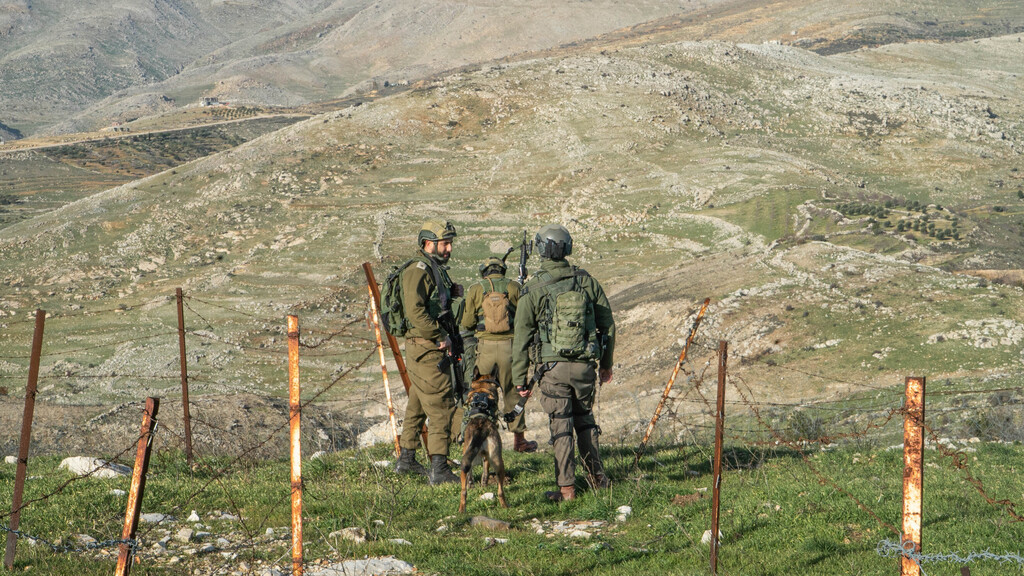

(Photo: IDF Spokesman)
A few dozen meters from us, in Syrian territory, a central UNDP post, the UN peacekeeping force on the Israel-Syria border, is being discovered. A pyramid of curls crosses between us. From the last of Daniel’s soldiers to the commander of the Spatial Division – no one here has any hope in these UN inspectors. The UNDF has zero influence on the establishment of Hezbollah and Iran in the Syrian Golan.
“Hezbollah has a serious presence here, whether openly or in disguise, and we are aware of and prepared for that,” said Captain Mazgini. “I am sure that Hezbollah monitors and sees the IDF’s activities in the area. “A warning or threat from the Lebanese sector may materialize here in a variety of scenarios, such as burying explosives, sniping and rocket fire.”
Just before returning to the safer side of Tel Sakhita, the RPG stops the traffic. A few dozen meters in front of the fighters, the tracker warns of an old and broken structure that stands on the eastern side of the Alon axis, but still in Israeli territory. To the thin demilitarized strip, and thence to Syrian soil, short and simple.
This is a sensitive point. In the not-too-distant past, a stockpile of weapons was discovered in this structure. Not far from here, fighters from the same battalion from the Paratroopers Brigade were injured in a bomb attack eight years ago. And a few kilometers from here, in the village of Khader, Hezbollah snipers arrived less than a year ago and tried to shoot IDF soldiers – until they were fired.
The dog was again sent first, a scanner. The power goes down to a kneeling position and everyone covers the 360 degrees. Gains are maintained at almost every stage throughout the operation, and especially now. If the terrorist operatives have set a trap for Daniel’s force, that will most likely be the point – towards the end of the patrol, when the forces are less alert and it is difficult to spot soldiers from the Israeli side.
10 View the gallery


Captain air conditioner
(Photo: IDF Spokesman)
After a few quiet minutes the abandoned structure is credited. The soldiers can advance back to Tel Sakhita.
When they return to the outpost, they divide the positions placed between the stone canals, and set demarcation boundaries between the pairs and vertebrae. At one of the positions the sniper rifle is pulled out and the fighter carrying it places it between the openings.
In a little while, when the sun goes down, the warriors will stay here with themselves and the battle rations. On the deadly night, the echoes of the bomb will be heard in the distance, and they will try to detect the flashes of attack in their binoculars.

